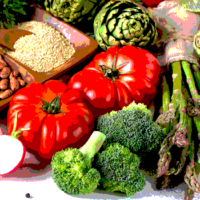Produce Sector’s Food Safety Priorities Differ Between Operation Sizes, Roles

Image credit: Tom Fisk via Pexels
A survey sent to stakeholders in the fresh produce sector found industry community members’ top food safety priority to be employee health and hygiene, while those serving in upper management roles ranked adjacent land use to be of the most importance. Although grower and technical assistance groups ranked priorities similarly, differences also emerged between small- and large-scale operations.
Supported by the U.S. Department of Agriculture’s National Institute of Food and Agriculture’s (USDA’s NIFA’s) Specialty Crops Research Initiative, a survey was developed by three produce industry experts across three university institutions, which was then reviewed by eight additional experts across seven government and university institutions. Respondents were asked to identify and rank their top five food safety priorities for the produce industry from a list of 24 priorities that were chosen to reflect emerging topics of concern and criteria of the Produce Safety Rule (PSR) under the Food Safety Modernization Act (FDA’s FSMA).
The survey received 281 completed responses from fresh produce community members, specifically, 111 growers (39.5 percent), 35 packers (12.46 percent), 30 consultants (10.68 percent), and 11 other roles. An additional 16 surveys were collected from produce advisory committee (PAC) members, including six regulators (37.5 percent), three trade associations (18.75 percent), two growers (12.5 percent), and five other roles.
From the 24 food safety priorities identified by the survey, produce industry community members ranked health and hygiene as the most important, followed by employee training, postharvest sanitation, traceability, and harvest sanitation. Rankings from growers and technical assistance groups (those who provide technical assistance, such as training, to the fresh produce industry) were similar for health and hygiene, training, traceability, and harvest sanitation.
Differences in priorities between operation sizes were noted for traceability and harvest sanitation. Small and very small operations were less likely than large operations to identify traceability as a top five concern. Small and very small operations prioritized employee training, health and hygiene, harvest sanitation, postharvest sanitation, and storage. Very small operations were about three times more likely than large operations to prioritize harvest sanitation.
Every respondent from the PAC group ranked adjacent land as their top food safety priority, followed by preharvest water, environmental monitoring programs (EMPs), Biological Soil Amendments of Animal Origin (BSAAO), and postharvest sanitation.
The researchers note that, because the survey was conducted in the wake of the COVID-19 pandemic, industry’s prioritization of health and hygiene may have been raised. Although health and hygiene ranked number one for both small and large food businesses, it was ranked the lowest priority by PAC respondents. This difference could be a function of the primary role of community members, who are concerned with health and hygiene as part of their daily work responsibilities, whereas the PAC group carry the concerns of upper management, which span an entire operation and must be anticipant of the future. Additionally, the authors highlight that there are many resources available to support health and hygiene activities, in comparison to topics like adjacent land use, which lack the same breadth of implementation resources. Overall, the PAC group was more concerned with emerging topics that have been targeted by FDA as hazards to produce safety.
Looking for a reprint of this article?
From high-res PDFs to custom plaques, order your copy today!






